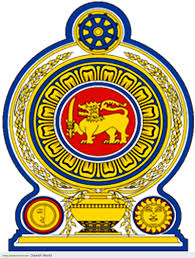Department for Registration of Persons
The movement of Indians between India and Sri Lanka had to be regulated according to the immigrations laws of India after Independence on 15th August 1947 and the immigration laws of Sri Lanka after her Independence on February 4, 1948. The then Prime Minister of India, Sri Jawahar Lal Nehru and Prime Minister of Sri Lanka, Mr D.S. Senanayaka discussed the issue of citizenship of Indians living in this country and special laws for those who inclined to obtain citizenship in this country were introduced. But these laws were not enforced as expected. Nehru – Kotalawala Agreement was signed in October 1954. Sirima – Shasthri Pact was signed in October 1964 with the intention of retaining a part of Indians in Sri Lanka and sending the other part to India. These agreements too were not properly implemented. An action was therefore, taken to register persons living in the country and to issue an Identity Card in order to identify persons. It was explained to the then government that this could control the migration of illicit Indian immigrants in Sri Lanka.
The methodology of issuing identity cards in Malaysia was studied and a draft law for registration of persons of the country was submitted to the Legal Draftsman. The Registrations of Persons Act No 32 of 1968 was approved by Parliament on June 22, 1968. Regulations were gazetted in 1971 and the Act came into operation from April 5, 1971. Accordingly the Department for Registrations of Persons was established on October 01, 1971. Although the Registrations of Persons Act was passed in the year 1968, it took several years to implement the Act. This delay was due to the priority given by the government to make provisions to implement the Sirima - Shasthri Pact. In addition, it was necessary to organize the administrative machinery and technological arrangements required to issue the identity card.
The first identity card was issued by the department on September 04, 1972. This identity card manually prepared through the then available manual paper based system, was considered the most secured identity card at the time. The laminating technology used for this purpose was a naval experience in Sri Lanka. The photograph affixed in the identity card was in black and white color. Particulars of the holder of the card and the number of the card were hand-written. Identity cards of Tamil and Muslim applicants were written in Sinhala and Tamil languages and all other identity cards were written in the Sinhala Language. Type-writing the number in the identity card commenced in the year 1978. The black and white photograph was replaced by a color photograph in 2005.
A significant change in the manual paper based system was made in the year 2014. Printing and issuing all identity cards in Sinhala and Tamil languages through technological methods commenced on February 28, 2014. However the laminating of identity cards continued through the machines manufactured in 1970s. The card used to issue the ident
Listing Details
Address
Department for Registrations of Persons 10th Floor Suhurupaya Sri Subhuthipura Road, Battaramulla, Sri Lanka
Telephone
(011) 2862235
Website


